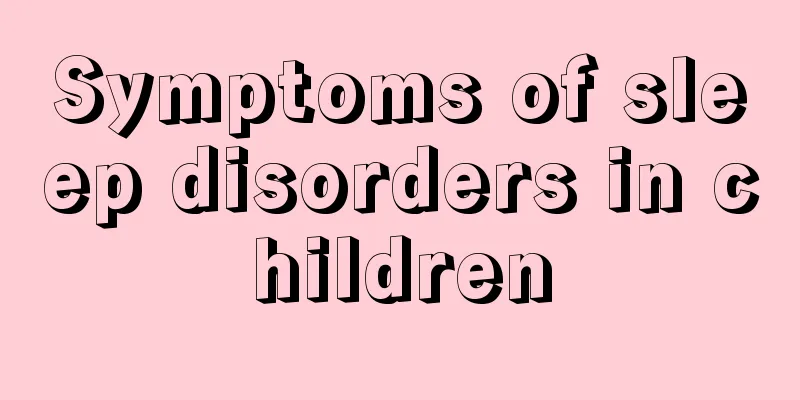alert! Seven types of malformations may not be detected by ultrasound

|
For expectant mothers, if they do not take proper care during pregnancy or have some bad habits, this may cause fetal malformations. After the child is born, the impact on the family and the child will be huge. Especially some deformed babies may not be able to be detected through B-ultrasound, so it is necessary to strengthen the tertiary prevention so as to reduce the problem of birth defects. Seven common congenital malformations in children According to experts, congenital malformations are not uncommon among children treated in this hospital, and they can be mainly divided into the following seven categories. 1. Congenital heart disease, which is currently the most common congenital malformation. 2. Malformations of the musculoskeletal system, such as polydactyly, scoliosis, and various joint deformities. These deformities do not pose a serious threat to life, but the detection rate in prenatal examinations is low. 3. Neurological malformations, such as hydrocephalus, meningocele, and meningocele, can be diagnosed through magnetic resonance imaging in pregnant women. 4. Digestive system malformations, such as esophageal atresia, diaphragmatic hernia, duodenal and small intestinal malformations, congenital megacolon, and imperforate anus. 5. Craniofacial deformities, such as cleft lip and palate, microcephaly, flat head, etc. 6. Abdominal wall defects, which can also be detected through prenatal examinations. 7. Urinary system malformations, cryptorchidism, hypospadias, etc. Tertiary prevention can reduce the occurrence of birth defects Experts remind that there are three lines of defense to prevent congenital defects in newborns. Marriage examination is the first, the second is pregnancy examination, and the third is newborn disease screening. Director Xu reminded that couples or families with a history of genetic diseases, those who have given birth to children with genetic diseases or congenital malformations, those whose parents have unexplained mental retardation, those with a history of repeated miscarriages, stillbirths, those with a history of exposure to adverse environmental factors during pregnancy, those who have been infertile for many years after marriage, and pregnant women over 35 years old are at high risk of having defective fetuses. These groups of people must raise their awareness of prevention and strictly implement preventive interventions according to the third-level prevention measures. Prenatal check-ups are very necessary, and hospitals decide what kind of check-ups to do and where to focus based on the different gestational weeks of each pregnant woman. The early pregnancy screening at Nanjing Maternal and Child Health Hospital is even advanced to 8-13 weeks of gestation. Another important line of defense is premarital check-up. Director Xu said that this is the most easily overlooked primary prevention among the three lines of defense, and adequate pre-pregnancy preparation is the basis for reducing birth defects. Since the announcement of the cancellation of compulsory premarital examinations, the rate of voluntary premarital examinations has dropped significantly, resulting in an increase in the miscarriage rate and fetal malformation rate among pregnant women in some areas, which should attract everyone's sufficient attention. |
<<: What is the treatment for vomiting in children?
>>: Can I get vaccinated if I have physiological diarrhea?
Recommend
Treatment of pancreatitis in children
Nowadays, the incidence of diseases among many ch...
Is it normal to lose teeth at 6 years old?
Sometimes many people who are already 26 years ol...
Seven-month-old baby always turns over when sleeping
A seven-month-old baby can already roll over and ...
Why does a child suck his lower lip?
Although some movements of babies seem very cute ...
Treatment of increased intracranial pressure in infants
The reason for increased intracranial pressure in...
Why are eight-month-old babies' legs weak?
An eight-month-old baby should be able to sit up ...
How to deal with children’s fever and chills?
What parents are most worried about is their chil...
Baby's nine-month development indicators
We all know that many babies are in unhealthy con...
What to do if your child has no memory
It is a common problem that children have poor me...
What to do if your 2-year-old baby is timid
In life, many parents pay special attention to ev...
Do babies need to take a bath every day?
If you are a mother of a child, you may have this...
How to correct a child who eats slowly?
Parents are very concerned about their children&#...
Nursing care for mild hypoxia in newborns
How to care for a newborn with mild hypoxia? Hypo...
Reasons why 1-year-old babies are restless when sleeping
Parents will find that many babies are always aff...
Baby cries before going to bed
There are many reasons why babies cry when they s...









